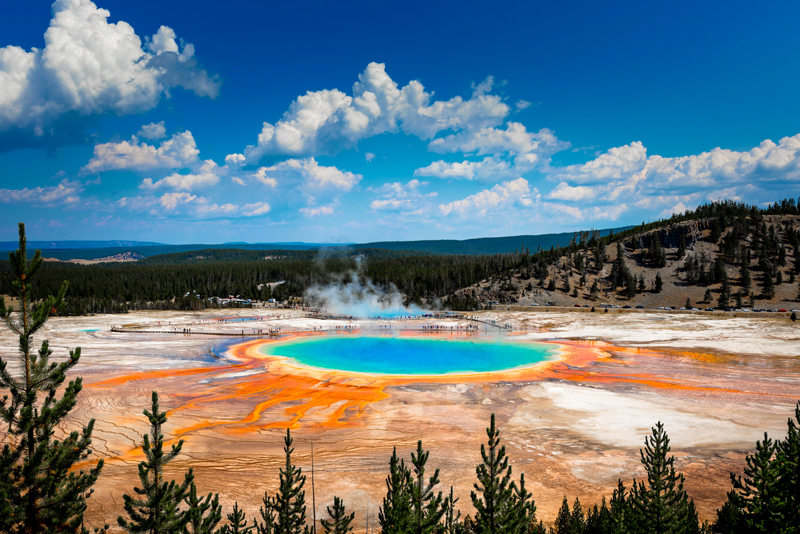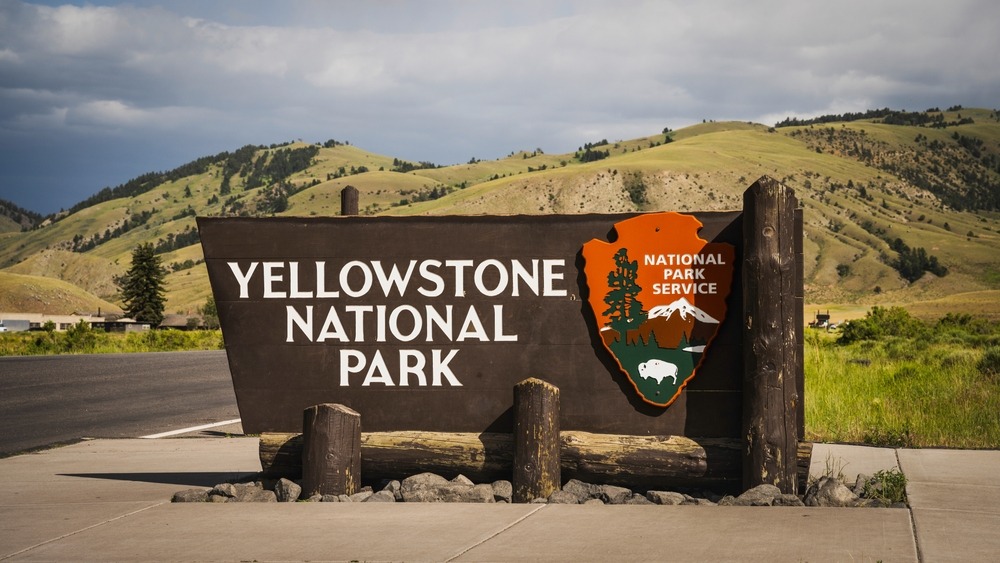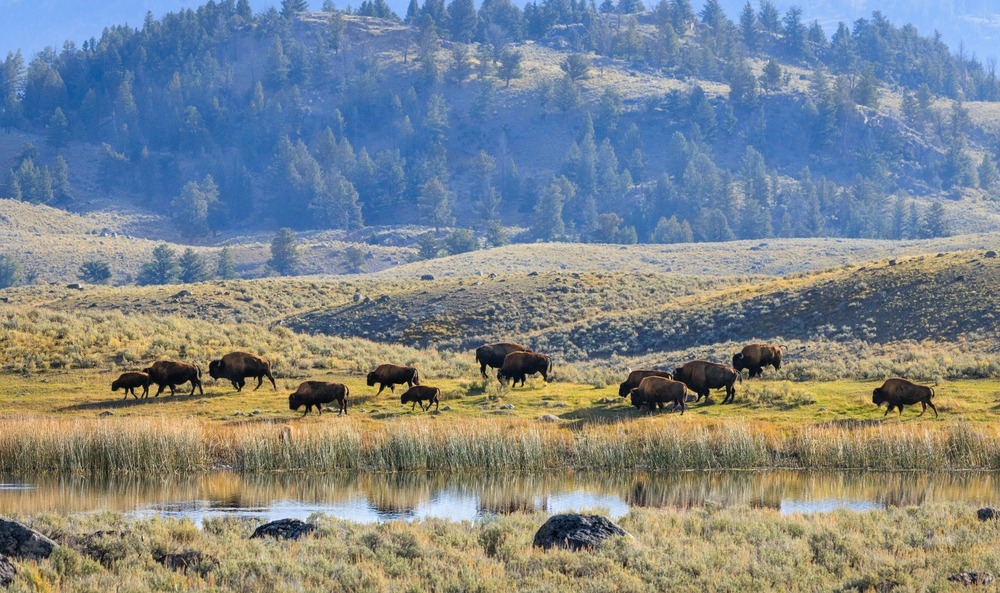Yellowstone National Park: A Historical, Geological, and Visitor’s Guide
The History of Yellowstone National Park
Yellowstone National Park, located primarily in the U.S. state of Wyoming and extending into Montana and Idaho, holds the distinction of being the first national park in the world. Officially established on March 1, 1872, Yellowstone was created by the U.S. Congress and signed into law by President Ulysses S. Grant. Its formation marked the beginning of the national park movement globally, a bold idea that designated scenic and scientifically significant lands to be preserved for public enjoyment and future generations rather than private exploitation.
Before its national park designation, Yellowstone had long been inhabited and revered by Native American tribes, including the Shoshone, Crow, Bannock, and Blackfeet, among others. These communities lived, hunted, and held spiritual beliefs tied to the geothermal features and abundant wildlife of the area. Despite centuries of Indigenous presence, it was the 19th-century expeditions by white explorers and surveyors that brought widespread attention to Yellowstone’s geological marvels.

The most famous of these was the 1871 Hayden Geological Survey, led by Ferdinand V. Hayden, which included artist Thomas Moran and photographer William Henry Jackson. Their visual and scientific documentation captivated the public and lawmakers, helping to convince Congress of the need to protect Yellowstone. Over the decades, park management evolved from a military-led force to the establishment of the National Park Service in 1916. Yellowstone has since served as a cornerstone in American conservation, wildlife management, and ecotourism.
Geological Origins of Yellowstone’s Landscape
Yellowstone’s dramatic terrain owes its existence to millions of years of intense geological activity. The park sits atop the Yellowstone Caldera, a massive supervolcano formed by cataclysmic eruptions, the most recent of which occurred approximately 640,000 years ago. These eruptions, among the largest in Earth’s history, created vast calderas and deposited layers of volcanic ash across the continent.
Beneath Yellowstone lies a magma chamber that remains active to this day, feeding the park’s over 10,000 hydrothermal features—more than half of the world’s geysers and hot springs. The region also sits at the convergence of several fault lines, making it one of the most seismically active areas in the United States. The park regularly experiences thousands of small earthquakes each year, contributing to the ongoing reshaping of the land.
Additionally, glacial activity during the Pleistocene Epoch sculpted valleys, carved out lakes, and helped form the diverse topography seen today. Yellowstone’s dynamic combination of volcanic, tectonic, and glacial forces has produced a landscape unlike any other, one that continues to evolve with each passing year.

Top 25 Attractions Within Yellowstone National Park
-
Old Faithful Geyser – Perhaps the most iconic geyser in the world, Old Faithful erupts reliably every 60 to 110 minutes, shooting boiling water up to 180 feet in the air.
-
Grand Prismatic Spring – The largest hot spring in the United States, this rainbow-colored marvel displays vivid hues due to heat-loving bacteria and minerals.
-
Yellowstone Lake – Sitting at 7,732 feet above sea level, this massive lake is one of the largest high-elevation lakes in North America and a serene spot for fishing and boating.
-
Grand Canyon of the Yellowstone – A breathtaking canyon carved by the Yellowstone River, featuring the stunning Upper and Lower Falls and dramatic multicolored walls.
-
Mammoth Hot Springs – A series of terraced, travertine formations created by calcium carbonate deposits, constantly shifting and sculpted by hot spring activity.
-
Norris Geyser Basin – The hottest and most acidic geyser basin in the park, home to Steamboat Geyser, the tallest active geyser in the world.
-
Lamar Valley – Often referred to as America’s Serengeti, this wildlife-rich area is one of the best spots to see wolves, bears, bison, and elk.
-
Hayden Valley – Another prime location for wildlife viewing, especially in the early morning or evening, with sweeping landscapes and meandering rivers.
-
Tower Fall – A picturesque 132-foot waterfall surrounded by volcanic rock pinnacles, easily accessible from a nearby overlook.
-
Mount Washburn – A popular hiking destination offering panoramic views from its 10,243-foot summit and a good chance of spotting bighorn sheep.
-
Artist Point – A classic viewpoint overlooking the Lower Falls and the Grand Canyon of the Yellowstone, renowned for its painterly vistas.
-
Gibbon Falls – A roadside waterfall cascading 84 feet down into the Gibbon River, providing an easy photo stop along the Grand Loop Road.
-
West Thumb Geyser Basin – Located on the edge of Yellowstone Lake, this basin features geysers and hot springs that bubble beneath the water’s surface.
-
Mud Volcano Area – A surreal and sulfurous landscape of bubbling mud pots and steaming fumaroles, including the ominous-sounding Dragon’s Mouth Spring.
-
Firehole River and Falls – A scenic river warmed by geothermal springs, with a waterfall that tumbles through a narrow canyon of lava rock.
-
Obsidian Cliff – A national historic landmark where volcanic glass was quarried by Native peoples for tools and trade.
-
Fountain Paint Pot Trail – A short, informative loop through geysers, mud pots, fumaroles, and hot springs showcasing the variety of thermal activity.
-
Specimen Ridge – Famous for its fossilized trees, this area offers insight into Yellowstone’s ancient forests buried by volcanic ash.
-
Blacktail Plateau Drive – A scenic one-way dirt road that often yields wildlife sightings with fewer crowds than the main roads.
-
LeHardy Rapids – A series of churning rapids on the Yellowstone River, a good spot to view cutthroat trout during spawning season.
-
Petrified Tree – A standing fossilized tree from an ancient subtropical forest, preserved by volcanic ash around 50 million years ago.
-
Biscuit Basin – A thermal area with unique geysers and springs, including the sapphire-blue Sapphire Pool.
-
Fishing Bridge – A historic location at the mouth of the Yellowstone River, popular with visitors and once a famed fishing spot.
-
Boiling River – One of the few legal soaking areas where a hot spring and a cold river meet to form a natural warm bath.
-
Yellowstone Historic Fort and Albright Visitor Center – Located in Mammoth, this historic district preserves remnants of the U.S. Army’s early park stewardship.

Yellowstone National Park is more than just a wilderness preserve—it is a living museum of Earth’s geological forces, a sanctuary for wildlife, and a monument to the conservation movement. From the fiery heart beneath its caldera to the frothing geysers, snow-capped peaks, and roaming bison, Yellowstone is a place where natural wonder and cultural history intertwine. For visitors, every path and viewpoint tells a part of the park’s ancient and modern story, making it one of the most profound travel experiences available in the United States and the world.

































